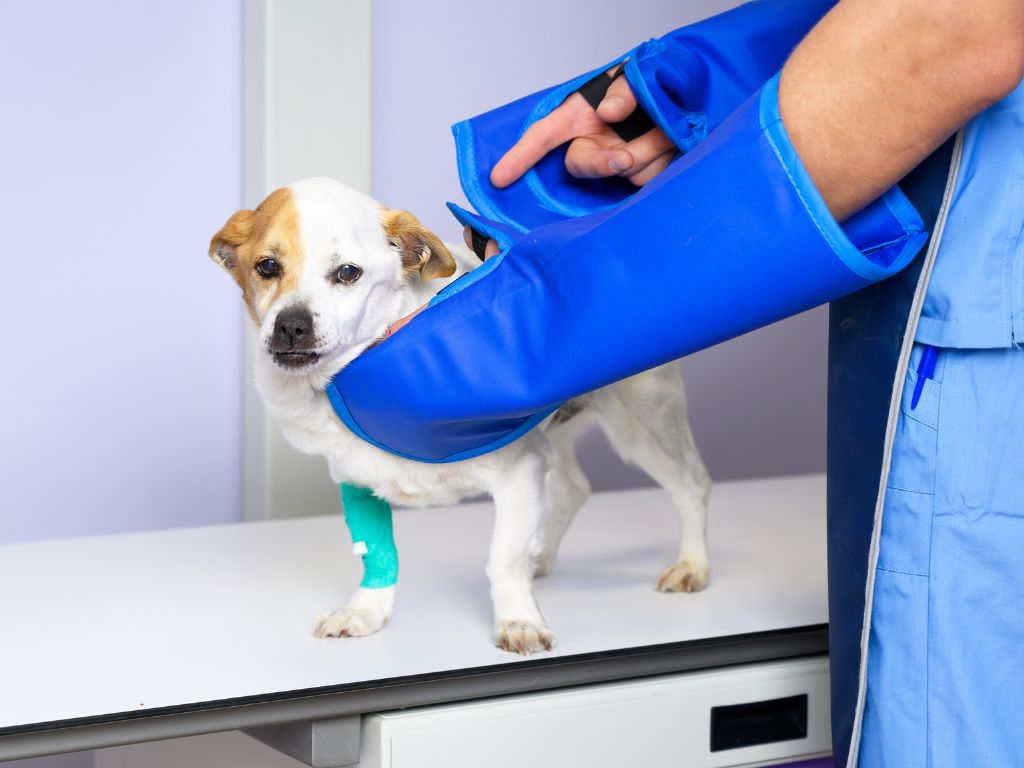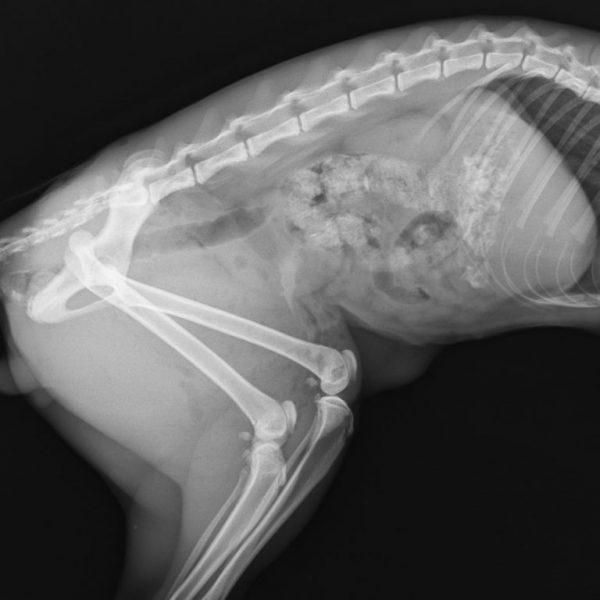
An X-ray will take an image of your pet’s internal body structure using high-energy electromagnetic radiation. Your veterinarian may request X-rays to spot broken bones, dental decay, ingested objects, or lung issues, to name a few.
The procedure is quick, painless, and safe for your pet.
But is it safe for your pocket? 😳 In this article, we reviewed what factors influence the cost of an X-ray, why it is important to get it done, and how to alleviate the financial burden.
Average Cost of a Dog X-ray
The price can be influenced by many factors but typically ranges from $150 to $250. Some factors considered in the pricing are:
- The vet’s location and reputation.
- The complexity and severity of the injury or condition as more complex cases may need more extensive imaging or additional X-rays.
- The size of your pet, for example, cat X-rays are often less expensive compared to dogs because they are smaller.
- If your dog will require sedatives for the procedure.
How to Save Money on Veterinary Costs for Dog X-rays
There are some strategies that you could consider to offset these additional expenses in your budget. However, these tips should be considered more as preventative measures because, in the case of an emergency, you want to act quickly and not prejudice your pet’s well-being.
💡Here is what you should consider when budgeting your dog’s health expenses:
- Consider purchasing pet insurance that covers X-rays as part of its base accident and illness insurance plan. Some pet insurance options are Lemonade, Spot, and Healthy Paws.
- Compare prices among different providers in your area.
- Opt to go to a routine vet vs. an emergency appointment as they tend to be less expensive (but of course, only if it is not an emergency).
- Discuss costs with your vet. They may be able to provide insights on cost-saving options or suggest alternative diagnoses if available.
- Ask if your veterinary clinic offers financial assistance programs or payment plans.
When to Get X-rays on Dogs
Your veterinarian may request an X-ray to aid in diagnosing certain conditions that are not obvious with a physical exam.
Dental
X-rays can detect any dental issues, including problems beneath the gum such as damage to the tooth roots, tumors, and abscesses.
Abdomen
Locate ingested objects in the intestinal tract, and decide whether surgery is needed or to let nature run its course. Asses the size and shape of the liver, kidneys, and spleen.
Chest
Identify respiratory problems, such as fungal infection, bronchitis, pneumonia, pulmonary edema, a mass, and other issues.
Bones
Spot the exact location and severity of bone fractures, issues in the spine or limbs, such as hip dysplasia, and spondylosis, and some tumors in the bones.

The Limitations of X-rays
Some areas cannot be properly seen on X-rays including the brain tissue and details of internal structures such as the heart, the bladder or other abdominal organs, many joints, and the lungs. In such cases, your vet may recommend getting computed tomography (CT), magnetic resonance imaging (MRI), or ultrasound (US).
Other limitations include that X-rays cannot capture the movement of internal structures or the organ’s function, and can’t give specific details about the exact cause of a condition. Further diagnostic tests may be necessary to obtain more information.
An X-ray isn’t always the best tool for diagnosing your dog’s health problem. For certain diseases, blood, urine, or feces tests, and a physical exam might be enough to have a diagnosis.
How do Vets Take X-rays on Dogs?
The dog is placed on a table and positioned in such a way that the X-ray beam will target the focus area. Sometimes dogs will need sedation, for example in cases where the animal is in pain or distress.
Then, the vet radiologist will measure the area of interest and calculate the strength and exposure time. The amount of radiation is considered safe when it is done on rare occasions so it doesn’t represent a problem for your pet. However, since the vet staff may perform these tests more frequently they will be wearing protective gear (e.g. chest apron, gloves, glasses, and thyroid protection) to reduce the exposure.
The radiologist may take different views if necessary. And once it’s done, the images will be ready at the moment and shown on the computer.
Final Thoughts
The best advice we can give you regarding veterinarian expenses is to plan ahead. Accidents and illnesses happen at any life stage and you want to be prepared to ensure your pet has access to the best treatments.
When it comes to X-ray costs, expect to pay anywhere between $150 and $250, but of course, the price can go up or down depending on various factors we have reviewed. And if you are looking to minimize fluctuations in your monthly budget, your best alternative is getting pet insurance with good coverage. Do your research and don’t leave these important decisions until the last minute.
FAQs
Not all dogs need to be sedated. Only when they are in extreme pain or distress. The sedation or anesthesia will increase the cost of the X-ray by $40 to $200.
Many factors influence the price of a dog X-ray, including your vet’s location, the complexity of the condition, your pet’s size, etc. However, you can save some money if you do your research in advance, for example, check for pet insurance options, compare different providers, and ask for financial aid.
Some conditions can not be diagnosed only by performing a physical exam. In such cases, your vet will need an image of your pet’s internal body structure to identify the problem.
Recent Posts
Amazon's Top Black Friday and Cyber Monday Deals for 2024: Dog Products Edition
The holiday shopping season has officially started and Amazon has already released some incredible deals on pet products for Black Friday and Cyber Monday 2024. Here is our curated list of the...
As someone who boards dogs as a side gig, I am used to seeing many pet trackers and smart collars these days. These devices have become a must-have tool for pet owners (especially when trusting their...
